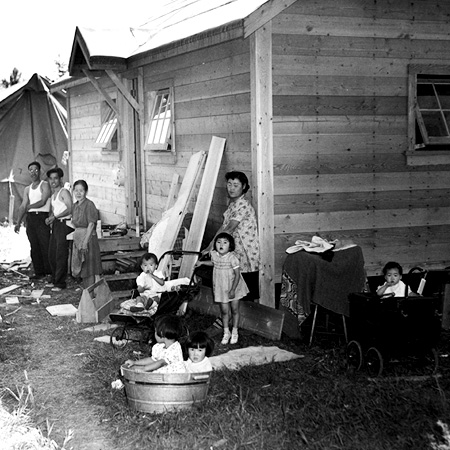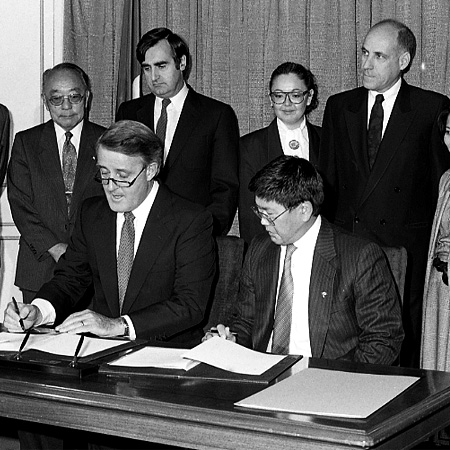
Cautions & Guidelines
- Do not teach controversial topics at the beginning of the year. First, build a relationship with the class and establish a safe, respectful environment for all learners.
- This resource is designed to facilitate instruction on topics related to the history of Japanese Canadians. The history of Japanese Canadians is a record of facts. However, it is important to recognize that topics such as the racism, the internment, and the fight to obtain redress may be a source of sensitivity or controversy. Teachers must also be aware of their own biases.
- Students of Japanese Canadian heritage may experience an emotional reaction when learning about or discussing the racism leading to the internment. It is important not to assume that students of Japanese Canadian heritage are any more knowledgeable about their family history, culture or language than are Canadians of other backgrounds.
- Avoid stereotyping. Cultures evolve over time and what is applicable or descriptive of Japanese culture is not the culture of Japanese Canadian individuals.
- Survivors of the internment and other Japanese Canadian resource people may have painful memories to share, and while they may feel hurt or anger, they also have the strength to share their feelings with others in order to promote healing and understanding.
Notes on Curriculum Connections
Each lesson includes a chart (located under the heading “Why”) which outlines possible learning outcomes for students.
BC Educators will undoubtedly recognize the language of our New Curriculum in both the learning outcomes and assessment sections of this unit. We hope educators outside of the province will also find the charts relevant, helpful, and user-friendly. We believe that—regardless of the curriculum language used—all educators seek to cover content and foster opportunities for their students to practice and develop essential skills. Accordingly, we have included a total of 4 sections in each lesson chart.
The first section, labelled “Know” addresses curriculum content. The second section, labelled “Do” focusses on the six historical thinking concepts referenced in the curricular competencies for Social Studies. The third section of the chart addresses “Core Skills” or core competencies, often referred to as life skills as students need these throughout education and beyond. Finally, the fourth section focusses on the First Peoples’ Principles of Learning (FPPL), which help ground our teaching more authentically in the values and experiences of Canadian Indigenous Peoples.
At first glance, the charts may appear overly “robust”; however, they are not meant to be overwhelming or suggest educators need assess all components. In fact, formal assessment is really limited to the first two sections of “Know” and “Do”. We have tried to limit learning outcomes in these particular sections, thus allowing teachers to zoom in on a manageable number to assess. Teachers are encouraged to focus on just one outcome per section, but this, of course, is up to the individual.
It is worth noting that the content and competencies included in the charts are by no means exhaustive and educators may find others that better fit their needs. Finally, as mentioned, the last two sections of “core skills” and “FPPL” are not formally assessed, but rather guideposts to inform our teaching practice and enhance student learning and development.
Curriculum & Assessment
This unit seeks to offer teachers some possible tools for formative and authentic assessment. Ideally, these assessment tools not only help educators assess student learning but, as importantly, help guide teacher instruction and inform students of their personal learning journey. Teachers are encouraged to focus on just a few learning outcomes found in the “Why” chart. From here, teachers can then choose from the tools below that best align with these particular learning outcomes.
The main tools of assessment for this unit include:
- Journal Reflections:
Students are given multiple opportunities to record their thoughts and questions, which allows them to reflect on what they have learned and to synthesize their understanding. Journal reflections also offer students an opportunity to express their feelings and make connections to their personal lives.
Possible reflection questions can be found at the end of lessons under sub-heading: Suggested Journal Reflection Prompts - Discussions:
Students are encouraged to actively participate in whole class and small group discussions throughout the unit. Teachers may choose to include strategies such as “Think, Pair, Share” to engage all students and generate deeper thinking.
Possible discussion questions can be found at the end of lessons under subheading: Suggested Discussion Questions. - Observations:
Student are observed during various activities and group interactions. Teachers may choose to consider students’ core skills during these observations. - Other:
There are several tasks that can be used for more formal assessment. Teachers are encouraged to co-construct criteria with students in order to deepen their understanding of learning outcomes.
Please Note: Teachers are encouraged to consider other formative assessment tools to ensure all learners are given an opportunity to show their learning, such as informal one-to-one conferencing or having learners sketch a picture in lieu of writing a journal reflection.
ASSESSMENT RUBRIC
Suggested use for the Assessment Chart:
- Photocopy the Assessment Chart and put each student's name in the first column.
- During discussions and working times or after reading each student's reflection journal, highlight (or put on a dot with a coloured marker on) any sections of the chart that reflect the student's performance (several areas may be highlighted in each section).
- Use the same rubric for the entire unit. Use different coloured markers for each assignment, and keep a key (e.g. dark blue = Introducing the Issues lesson, yellow = Fair/Unfair Game, etc.) at the bottom of the page.
- At the end of this unit, the rubric will show clusters of colourful markings indicating where each student's level of proficency is.
How to use these activities and lessons?
Start with the Main Dispossession Activity: the Powell Street simulation.
Do the 8 Supporting Lessons concurrently so that you are ready to take away the students' simulated possessions and property by Lesson C: Introduction to Internment (Viewing Photographs).
You can choose to skip some of the Supporting Lessons if you are pressed for time.
Each lesson contains these parts:
What
- a synopsis of what students do in each lesson
Why
- curriculum connections for each lesson, including what students will learn to do, what they will know by doing the lesson, broader competencies explored by doing the lesson, and First Nations Principles of Learning addressed by doing the lesson.
How
- a "recipe" for how to teach each lesson
With most of the Supporting Lessons, there are also Extensions and Variations so that you can go deeper or take things in a different direction.
You can choose to skip some of the Supporting Lessons if you are pressed for time.








